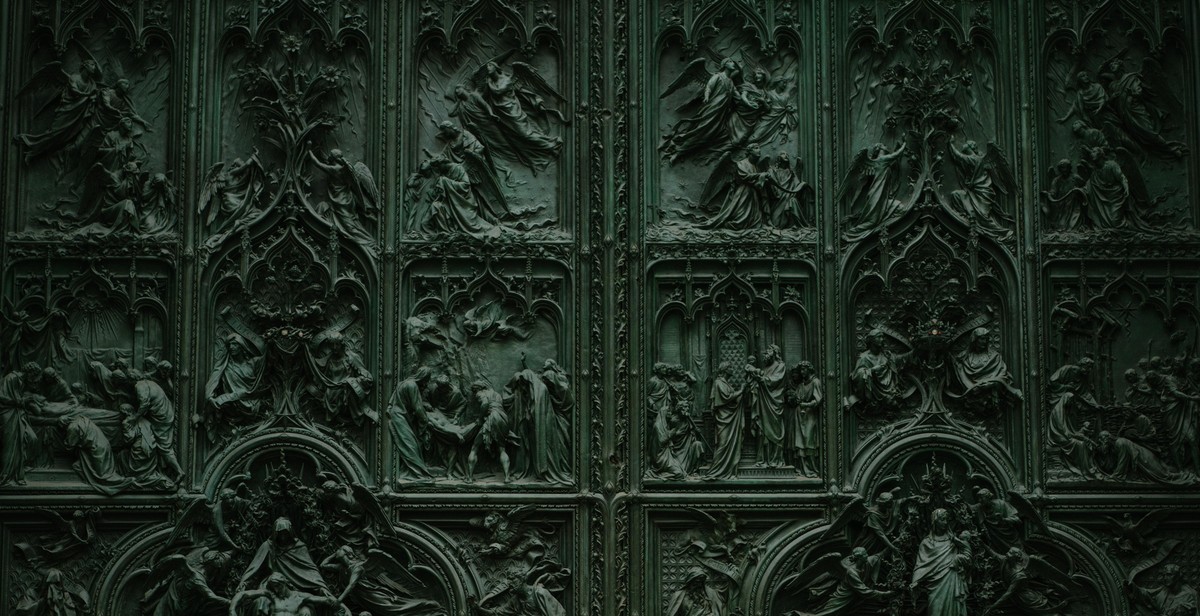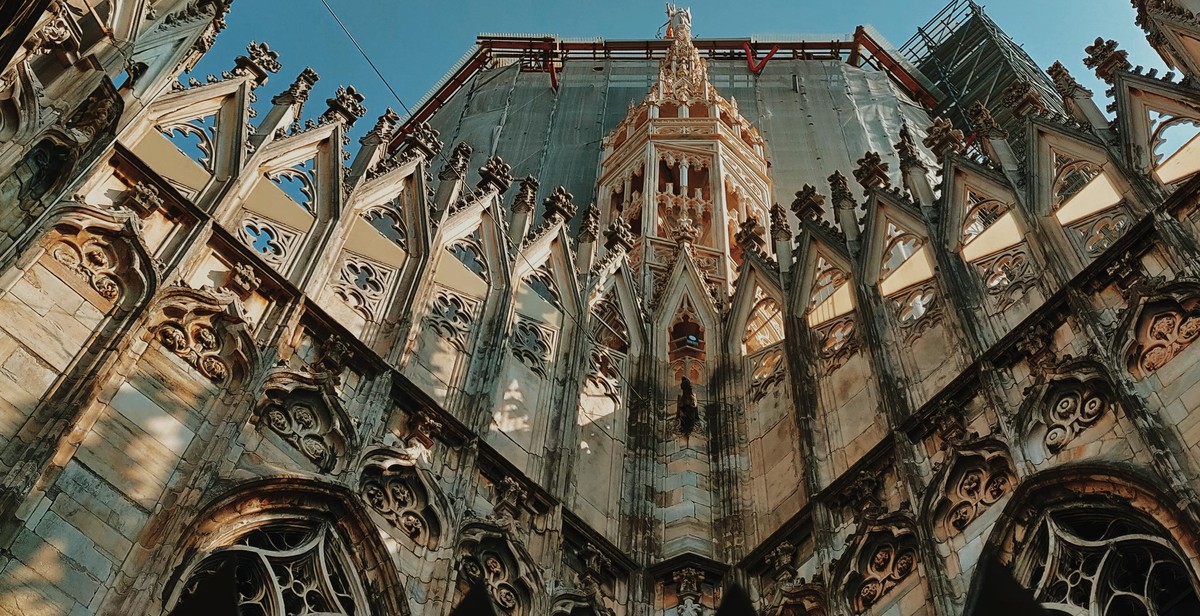How to Embrace Gothic Literature: Exploring the Genre and Essential Works
Gothic literature is a genre that has fascinated readers for centuries. It originated in the late 18th century and gained popularity in the 19th century with works such as Mary Shelley’s Frankenstein and Bram Stoker’s Dracula. Gothic literature is characterized by elements of horror, romance, and the supernatural. It often features haunted castles, dark forests, and mysterious creatures.
Embracing Gothic literature can be a thrilling experience for readers who enjoy the macabre and eerie. This genre has inspired countless works of literature, film, and art, and continues to captivate audiences today.
Exploring the Genre
Gothic literature is a diverse genre with many subgenres and variations. From classic horror to romantic Gothic, there are countless works to explore. Some essential subgenres of Gothic literature include:
- Classic horror
- Romantic Gothic
- Southern Gothic
- Contemporary Gothic
- Urban Gothic
Essential Works
There are many essential works in the Gothic genre that every reader should explore. These include:
- Mary Shelley’s Frankenstein
- Bram Stoker’s Dracula
- Emily Bronte’s Wuthering Heights
- Edgar Allan Poe’s The Fall of the House of Usher
- Charlotte Bronte’s Jane Eyre
- Oscar Wilde’s The Picture of Dorian Gray
These works represent some of the best examples of Gothic literature and are essential reading for anyone interested in the genre.

What is Gothic Literature?
Gothic literature is a genre that originated in the late 18th century and is characterized by its dark, mysterious, and supernatural themes. It often features haunted castles, supernatural beings, and eerie landscapes, and is known for its ability to evoke emotions of fear, terror, and suspense in its readers.
Defining Gothic Literature
The term “Gothic” originally referred to the Goths, a Germanic tribe that played a significant role in the fall of the Roman Empire. However, in the context of literature, it has come to refer to a specific genre that emerged in the late 18th century.
Gothic literature is often associated with horror fiction, but it is more than that. It is a genre that explores the darker aspects of human nature, such as madness, obsession, and death. It also often deals with themes of isolation, imprisonment, and the supernatural.
One of the defining characteristics of Gothic literature is its use of atmosphere and setting to create a sense of foreboding and unease. Gothic novels often take place in dark, gloomy locations, such as haunted castles or ancient ruins, and feature supernatural elements like ghosts, vampires, and werewolves.
The Origins of Gothic Literature
The Gothic literary tradition can be traced back to the 18th century, when writers began to experiment with new forms of fiction. One of the earliest examples of Gothic literature is Horace Walpole’s The Castle of Otranto, which was published in 1764.
Other notable Gothic writers from this period include Ann Radcliffe, whose works include The Mysteries of Udolpho and The Italian, and Matthew Lewis, who wrote The Monk.
The genre continued to evolve in the 19th century, with writers like Edgar Allan Poe and Bram Stoker making significant contributions to the tradition. Today, Gothic literature remains a popular genre, with contemporary writers like Neil Gaiman and Stephen King continuing to explore its themes and conventions.

Elements of Gothic Literature
Gothic literature is a genre that emerged in the late 18th century and was popularized in the 19th century. It is characterized by elements of horror, mystery, and the supernatural. Gothic literature is known for its dark and eerie atmosphere, complex characters, and intricate plotlines. Here are the essential elements of gothic literature:
Setting
The setting of gothic literature is often a dark and gloomy place, such as a castle, a haunted house, or a graveyard. The setting is usually isolated, which creates a sense of claustrophobia and intensifies the feeling of danger. The setting can also be used to symbolize the psychological state of the characters. For example, a decaying mansion can represent the decay of the protagonist’s mind.
Atmosphere
The atmosphere of gothic literature is characterized by a sense of foreboding and unease. The setting, along with the use of dark and somber imagery, creates a sense of dread and fear in the reader. The atmosphere is often enhanced by the use of supernatural elements, such as ghosts, demons, and vampires.
Characters
The characters in gothic literature are often complex and multi-dimensional. They are usually haunted by their past, and their actions are driven by their inner demons. The protagonist is often a victim of circumstances beyond their control, while the antagonist is usually a symbol of evil. The characters in gothic literature are often flawed and morally ambiguous.
Plot
The plot of gothic literature is often intricate and filled with twists and turns. The story usually involves a mystery or a supernatural occurrence that the protagonist must unravel. The plot often involves a struggle between good and evil, and the protagonist is usually faced with impossible choices.
Themes
The themes of gothic literature often revolve around the darker aspects of human nature, such as fear, guilt, and obsession. The genre often explores the consequences of sin and the struggle between good and evil. Other common themes include madness, death, and the supernatural.
| Elements of Gothic Literature | Description |
|---|---|
| Setting | The setting of gothic literature is often a dark and gloomy place, such as a castle, a haunted house, or a graveyard. |
| Atmosphere | The atmosphere of gothic literature is characterized by a sense of foreboding and unease. |
| Characters | The characters in gothic literature are often complex and multi-dimensional. |
| Plot | The plot of gothic literature is often intricate and filled with twists and turns. |
| Themes | The themes of gothic literature often revolve around the darker aspects of human nature, such as fear, guilt, and obsession. |

Essential Works of Gothic Literature
Gothic literature is a genre that has been around for centuries and has produced some of the most iconic works of literature in history. Here are some of the essential works of gothic literature that every fan of the genre should read:
Frankenstein by Mary Shelley
Frankenstein is a gothic masterpiece that has become a cultural icon. Written by Mary Shelley in 1818, the novel tells the story of Victor Frankenstein, a scientist who creates a monster out of dead body parts. The novel explores themes of ambition, responsibility, and the consequences of playing God. It is a must-read for any fan of gothic literature.
Dracula by Bram Stoker
Dracula is a classic gothic novel written by Bram Stoker in 1897. The novel tells the story of Count Dracula, a vampire who moves from Transylvania to England to spread the undead curse. The novel is a masterpiece of horror and suspense and has become a cultural icon. It is a must-read for any fan of gothic literature.
The Castle of Otranto by Horace Walpole
The Castle of Otranto is widely considered to be the first gothic novel ever written. Written by Horace Walpole in 1764, the novel tells the story of Manfred, the lord of the castle of Otranto, who is haunted by a prophecy that he will lose his power and his castle to a man who is not of his bloodline. The novel is a must-read for anyone interested in the origins of gothic literature.
The Mysteries of Udolpho by Ann Radcliffe
The Mysteries of Udolpho is a gothic novel written by Ann Radcliffe in 1794. The novel tells the story of Emily St. Aubert, a young orphan who is sent to live with her aunt in a remote castle in the mountains of Italy. The novel is a masterpiece of gothic literature and explores themes of love, loss, and the supernatural.
The Monk by Matthew Lewis
The Monk is a gothic novel written by Matthew Lewis in 1796. The novel tells the story of Ambrosio, a monk who is tempted by the devil and falls into a life of sin and debauchery. The novel is a masterpiece of gothic literature and explores themes of morality, religion, and the supernatural.
| Book Title | Author | Year Published |
|---|---|---|
| Frankenstein | Mary Shelley | 1818 |
| Dracula | Bram Stoker | 1897 |
| The Castle of Otranto | Horace Walpole | 1764 |
| The Mysteries of Udolpho | Ann Radcliffe | 1794 |
| The Monk | Matthew Lewis | 1796 |

How to Embrace Gothic Literature
Gothic literature is a genre that has been around for centuries, yet it still captivates readers with its dark, mysterious, and eerie themes. Whether you are a newcomer to this genre or have been a fan for years, there are many ways to embrace gothic literature and immerse yourself in its haunting world.
Explore the Genre
If you are new to gothic literature, start by exploring the genre. Read articles and reviews about the classic gothic works and modern gothic novels. This will help you understand the underlying themes and motifs of the genre, which include supernatural elements, horror, romance, and suspense.
Read Widely
Reading widely is crucial to embracing gothic literature. Start with the classics such as Mary Shelley’s Frankenstein, Bram Stoker’s Dracula, and Edgar Allan Poe’s short stories. Then, explore modern gothic authors such as Sarah Waters, Angela Carter, and Carlos Ruiz Zafón. By reading widely, you will gain a deeper understanding of the genre and its evolution over time.
Join a Book Club
Joining a book club is a great way to engage with other readers who share your love for gothic literature. Book clubs provide a platform for discussing and analyzing literary works, which can enhance your understanding and appreciation of the genre. You can also get recommendations for new books to read and discover new perspectives on classic works.
Visit Gothic-Inspired Locations
Finally, visiting gothic-inspired locations can add an extra layer of immersion to your reading experience. Consider visiting places such as Whitby Abbey, which inspired Bram Stoker’s Dracula, or the Gothic Quarter in Barcelona, Spain, which inspired Carlos Ruiz Zafón’s The Shadow of the Wind. These locations can help you visualize the settings of your favorite gothic novels and deepen your connection to the genre.
In conclusion, embracing gothic literature requires an open mind and a willingness to explore the genre. By reading widely, joining a book club, and visiting gothic-inspired locations, you can deepen your appreciation and understanding of this captivating genre.
